All You Ever Wanted To Know About Open Kettle Canning But Were Afraid To Ask
Views: 580
By and large, discussing open kettle canning, also known as inversion canning, in a canning community resemble a virtual battleground. It is common to have opposing sides exchange harsh words whenever somebody brings up the subject of canning the old fashioned way. However, safety arguments on both sides are often superficial. For most part the arguments boil down to phrases like “because our ancestors did it” or “because the USDA recommends it.” With our background in medicine and applied science, we diligently examine safety concerns related to open kettle canning, exploring the reasoning behind each argument. Subsequently, we’ll offer practical steps aimed at enhancing the safety of your open kettle canning practices.
Disclaimer and Caution
Without reservation, we state that the open kettle canning method is not an approved USDA canning method to preserve food. The information shared here is for general awareness and personal use only. Equally important, we acknowledge that the provided information may contain inaccuracies or errors. Furthermore, we explicitly disclaim liability for any such inaccuracies or errors to the maximum extent permitted by law.
What is open kettle canning method?
The open kettle canning method, frequently referred to as an old way of canning, involves cooking a preserve in an open cooking dish, commonly known as a kettle (usually a pot of suitable size). Next, the canner pours the boiling food into sterilized jars, secures them with lids, and finally inverts the jars to cool.
Pickling with open cattle canning is slightly different. First, canner packs fresh fruits and vegetables together with spices and aromatics into sterlized jars. Next, the canner pours freshly boiled brine over the fruits or vegetables and then inverts the jars to cool. The seal in this method is created by a vacuum as the jars cool down in the inverted position. This is the reason why folks refer to this method as the inversion canning method.
Historically, open kettle canning or inversion canning was considered safe until the 1980s (source: National Agricultural Library Exhibits, U.S. Department of Agriculture). Anecdotes suggest that those who have lived through that era still recall respected experts in the field of canning actively endorsing the open kettle method before its safety status changed.
What is botulism?
When people discuss open kettle canning, botulism in canning inevitably becomes a central topic. But what exactly is botulism? Simply put, it’s a rare but severe and sometimes fatal illness. It is caused by a toxin produced by a specific type of bacteria. Markedly, botulism bacteria grow in a moist, oxygen-free environment. And this is a reason why improper home canning can provide ideal conditions for it to multiply and produce the toxin.
So, how widespread is botulism?

In 2018, health departments reported 242 cases of botulism to CDC. Of those, 231 were laboratory-confirmed and 11 were probable.

Centers for Disease Control and Prevention (CDC): Botulism Annual Summary, 2018. Atlanta, Georgia: U.S. Department of Health and Human Services, CDC, 2021.
By all accounts, it is a relatively small number.
Botulism types
Did you know that botulism from canning, also known as food-borne botulism, is not the only way to get sick with this disease?
Out of the 242 cases of botulism reported to CDC in 2018:

[In 2018] The cases were of the following types: 162 (67%) infant, 61 (25%) wound, 18 (7%) foodborne, and 1 (<1%) other, diagnosed as probable adult intestinal colonization.

Centers for Disease Control and Prevention (CDC): Botulism Annual Summary, 2018. Atlanta, Georgia: U.S. Department of Health and Human Services, CDC, 2021.
Across the border:

During 2006–2021, Canada had 55 laboratory-confirmed outbreaks of foodborne botulism, involving 67 cases. The mean annual incidence was 0.01 case/100,000 population.

Centers for Disease Control and Prevention (CDC): Harris RA, Tchao C, Prystajecky N, Weedmark K, Tcholakov Y, Lefebvre M, et al. Foodborne Botulism, Canada, 2006–2021. Emerg Infect Dis. 2023;29(9):1730-1737. https://doi.org/10.3201/eid2909.230409
While cases of food-borne botulism may be relatively rare, the impact on families or individuals can be significant. Despite the seemingly low numbers, why risk a potentially fatal disease when there are ways to prevent it?
Where does botulism come from?

The spores of the bacteria are widespread in nature and commonly found in: soil, dust, sediments at the bottom of lakes and oceans, the intestines of animals, including fish and birds. These spores rarely cause problems because they do not grow when exposed to oxygen.

Government of Canada: https://www.canada.ca/en/public-health/services/diseases/botulism/causes.html#a3
Food and beverages become contaminated when spores of the bacteria that cause botulism get into these products. These spores may be able to grow into toxin-producing bacteria in low-oxygen low-acidity environment.
The botulinum toxin has been found in a variety of foods, including low-acid preserved vegetables, such as green beans, spinach, mushrooms, and beets; fish, including canned tuna, fermented, salted and smoked fish; and meat products, such as ham and sausage. Occasionally, commercially prepared foods are involved.
The good news about botulism from canning
While botulism is a horrible disease, at least as far as foodborne botulism, not all is gloom and doom. According to WHO, the good news is:

C. botulinum [the botulism causing bacteria] will not grow in acidic conditions (pH less than 4.6), and therefore the toxin will not be formed in acidic foods (however, a low pH will not degrade any pre-formed toxin). Combinations of low storage temperature and salt contents and/or pH are also used to prevent the growth of the bacteria or the formation of the toxin.

World Health Organization: https://www.who.int/news-room/fact-sheets/detail/botulism
The reason why this is good news is that whatever canning method you use, including open kettle canning, as long as the foods you preserve do not fall under the low-acid category, the last thing you should worry about is getting sick with canning-related botulism. You should still worry about other canning-related things, but botulism isn’t one of them.
Why does USDA no longer consider open kettle canning safe?
USDA National Agriculture Library said this about open kettle canning:

Heating food in a kettle this way is quicker and more even than heating food in a jar. But the disadvantages of open-kettle canning seem to outweigh the one advantage. The chief difficulty is that food can so easily be contaminated while pouring it into the jars or sealing them.

Breazeale, J. F. & Benson, O. H. (1936). Home canning methods. United States Department of Agriculture, Office of Information. https://archive.org/details/homecanningmetho1936unit
Then, in August 2020, the USDA emphasized the increased risk of food spoilage as the reason for not recommending open kettle canning. They explicitly caution against practices such as open-kettle canning, as this method does not effectively prevent all risks of spoilage.
What does USDA say about botulism in canning?
The USDA explicitly associates the risk of botulism with canning low-acid foods. What is very important to understand, is that they do not link this risk as being exclusively related to open kettle canning method. Even the USDA-approved water bath canning method gets the same warning sticker when it comes to canning low-acid foods. The USDA emphasizes that the only secure way to can low-acid foods is by using a pressure canner. Severe cases of foodborne botulism have even prompted an OSU Extension educator to emphasize that using the wrong canning method, such as a boiling water bath, can lead to botulism in low-acid canned foods like meat, potatoes, and vegetables.
To summarize, it’s not accurate to say that the USDA links open kettle canning to botulism, irrespective of the type of food you are trying to preserve. When low-acid foods are removed from the discussion, the USDA’s main concerns with the open kettle canning are:
- Increased risk of contamination while pouring and sealing jars
- Increased risk of spoilage
Canning low-acid foods
They say the best prevention is avoidance. If you are not planning to use a pressure canner to can low-acid foods, the wisest approach may just be to stay away from caning these foods.
Wondering what foods are low in acid? Many years ago, USDA put together a useful canning table that still can be used today as a guide:
However, because WHO already told us that the botulism bacteria will not grow in acidic conditions, especially in combination with higher salt contents, increasing acidity and saltiness in the low-acid foods may just be your ticket to success. The next question is how to figure out the acidity level of your preserve.
How to measure food acidity levels
Determining the acidity level of preserves requires using pH measuring tools, either pH strips or pH meter. While pH strips offer a cost-effective and simple to use option, they lack accuracy and precision. On the other hand, pH meters, though more expensive and significantly more complicated to use, provide accurate readings.
How to avoid contamination of preserves when using open kettle canning method?


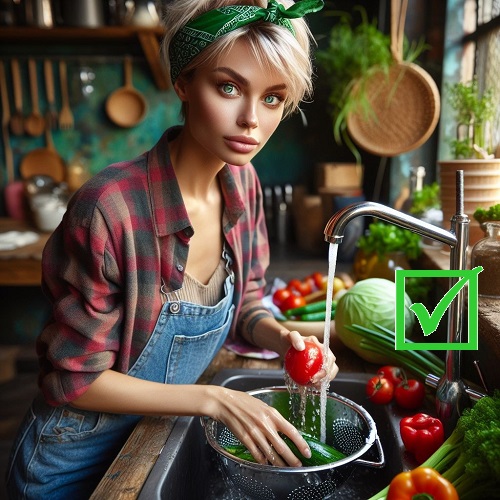



So, say you decided that canning low-acid foods is not for you but you plan to continue canning jams, jellies, pickles and the other acidic foods. Lets say that for canning these types of food, you plan to continue canning the old fashioned way but are concerned about the increased risk of contamination during the pouring and sealing steps. This is how you can minimize that risk:
- Firstly, make sure to keep everything clean and hygienic throughout the entire canning process. Wash your hands thoroughly with soap and water before touching any ingredients or equipment. Also, ensure that all surfaces, utensils, and containers are disinfected to get rid of any potential contaminants. Cleaning with a sponge that’s been sitting in your kitchen sink for a month won’t cut it; use disinfecting products like Clorox to kill harmful bacteria.
- Secondly, when using mason jars, pots, and other canning equipment, clean them in a dishwasher or with hot water and soap. After careful cleaning, make sure to sterilize mason jars, funnels, and ladles. We discuss sterilization details in a separate post.
- When preparing preserves, throw away any bruised or damaged produce, as they can carry harmful microorganisms. Wash fruits and vegetables under running water to remove dirt and debris. Peel, core, and cut them with clean utensils on sanitized surfaces only.
- Speaking of sterilization, make sure to sterilize your jars by boiling them in water or steaming them over boiling water (steam sterilization). Additional sterilization details for jars are provided in a separate post.
- Also, sterilize all of your utensils by submerging them in boiling water for up to 5 min. We recommend to use stainless steel utensils. Remember that a sterilized ladle stops being sterilized once it touches a counter casually wiped with an old kitchen towel instead of being disinfected.
- It’s worth noting that when reaching for a paper towel that’s been collecting dust on your counter for a couple of days to clean jar rims, you might introduce bacteria into your preserves. Dip the paper towel into boiling water with sterilized kitchen tongs before wiping jar rims with a wet paper towel.

- Lastly, after the preserve goes in, your fingers stay out of jars. It doesn’t matter how clean you think your hands are. Stay mindful of this to maintain a sanitary canning process.
How to decrease the risk of preserve spoilage when canning the old fashioned way
If you’ve followed our tips to keep your preserves safe, you’re on the right track to reduce the chance of them going bad. To set the record straight, we are not talking about botulism bacteria. Contamination with botulism-causing bacteria won’t make your preserves smell weird or look different. However, there are other bacteria that, although not that deadly, can upset your stomach. Ever seen black and white moldy patches on preserves? How about the jars with bulging lids or even leaking a bad-smelling liquid? That’s the kind of bacteria we’re talking about!
- Firstly, just like with water bath canning, using heat to process your preserves further lowers the risk of spoilage. However, in open kettle canning, the way to keep the preserve temperature high inside the jar for a longer time is by means of wrapping jars in two to three thick beach towels.
- Additionally, an important step in decreasing the risk of spoilage is to ensure that your canned preserves have a reliable seal. With an open kettle canning method, the seal is created as a result of inverting jars packed with preserves and letting them cool upside down.
Both of these steps are essential to ensure the safety of your preserves for you and your family if you choose to continue using the traditional canning method.
You may also like:
-
Sweet Tart Yellow Mirabelle Plum Jam Recipe: French Confiture Style
This sweet tart Mirabelle plum jam proves you don’t need a Parisian zip code or deep pockets to enjoy something classy and extraordinary. Got yellow plums in your backyard? One recipe, two simmers, and you’ve got a jar fit for a glass shelf in a French confectionery.
-
Boozy & Spiced Seedless Raspberry Jam for Grown-Ups
Our raspberry jam breaks out of the mold. Seedless, low sugar, spiked with port and pepper, this is the jam that went rogue. It’s like that guest at a polite garden party, that shows up wearing leather boots and carrying a bottle of booze. Bold, smooth and unforgettable. Make it! Go rogue!
-
Make-Ahead Christmas Jam Recipe (Cranberry-Strawberry Jam)
You could wait until December to make your Christmas Jam. You could. But let’s be honest: December is full of burnt cookies, delayed packages, and half-wrapped gifts. You’ll be frazzled. But if you make it now—when strawberries are sweet and plentiful, you’ll feel like a wizard in December A smug, cinnamon-scented wizard.
-
Authentic Ukrainian Cabbage Rolls (Holubtsi) Recipe & More
You may know Ukrainian cabbage rolls as comfort food, but did you know they’re the ultimate make-ahead freezer meal? Holubtsi start out delicious but turn next-level amazing after a night in the fridge or freezer. This guide will teach you to roll, cook, and most importantly reheat them like a pro. Spoiler: make extra!
-
Blood Orange Marmalade: Your New Favorite Citrus Jam Recipe
To all the citrus marmalade haters out there—we see you. And we promise: this blood orange marmalade is different. It’s bright, bold, and anything but boring. It even has a dash of booze! Give it a try this winter, and you just might find yourself joining the citrus marmalade fan club.
-
Soy Sauce Pickled Cherry Tomatoes: Try Bold, New Pickle Flavor
Yes, you can make soy sauce pickled cherry tomatoes! They are a bold twist on traditional pickles, delivering an unexpected burst of umami and sweetness. Forget ordinary vinegar-based brines—this recipe transforms your tomatoes into an unforgettable flavor bomb. Perfect for snacking or charcuterie boards, this unique pickle will wow your taste buds!
-
How To Pickle Cherry Tomatoes: Easy Recipe, Tips, And Troubleshooting
Cherry tomatoes are the candy of the vegetable world, but they don’t last forever—unless you pickle them! Try this easy, beginner-friendly recipe for the perfect homemade holiday gift. Pickled and canned cherry tomatoes make a great addition to your charcuterie board and add a pop of color, like little jewels, to your holiday table.
-
Fried And Pickled Sweet Banana Peppers: Recipe For Canning
Looking for a simple way to jazz up your charcuterie board? This fried and pickled sweet banana peppers recipe is your new go-to! These peppers are easy to can, so you’ll always have a jar ready to impress guests—or just treat yourself. Plus, these canned banana peppers make a great side for any meats!
-
How To Make Pickled Roasted Bell Pepper
Pickled roasted bell peppers are a pantry staple, and making them at home is easy and rewarding. With rising prices and growing interest in food quality, now is the perfect time to roast and pickle your own. It’s a simple way to save money, control ingredients, and enjoy healthier peppers in your meals!
-
Your Cheese Board’s New Best Friend: Spicy Pear Jelly
Introducing Spicy Pear Jelly. It’s sweet, spicy, and it’s the perfect match for a variety of cheeses, from mild to bold. And yes, it’s as delicious as it sounds! Unquestionably, a little jar of this golden goodness deserves a spot on your next charcuterie board spread. Here’s a quick recipe to get you started!
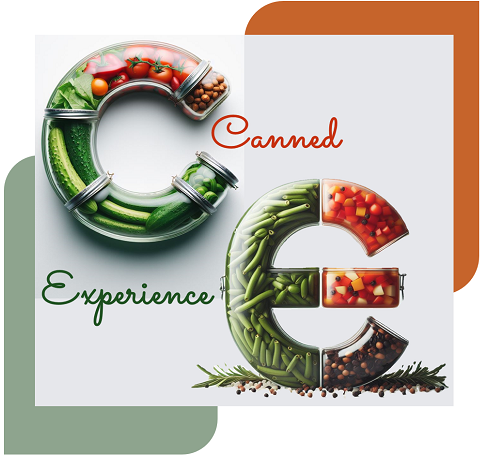
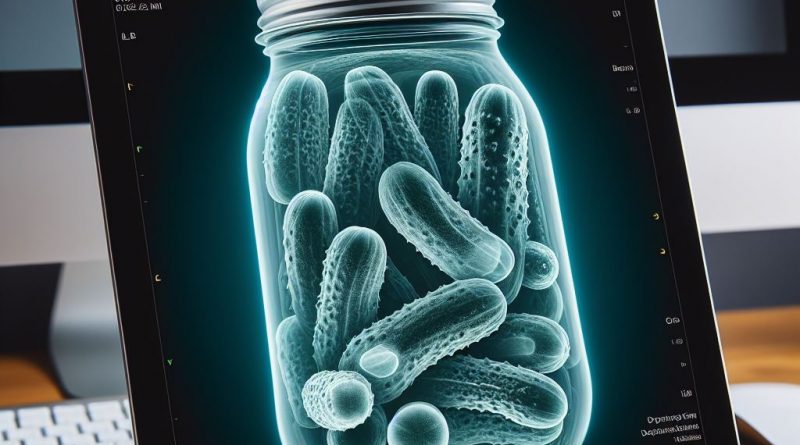
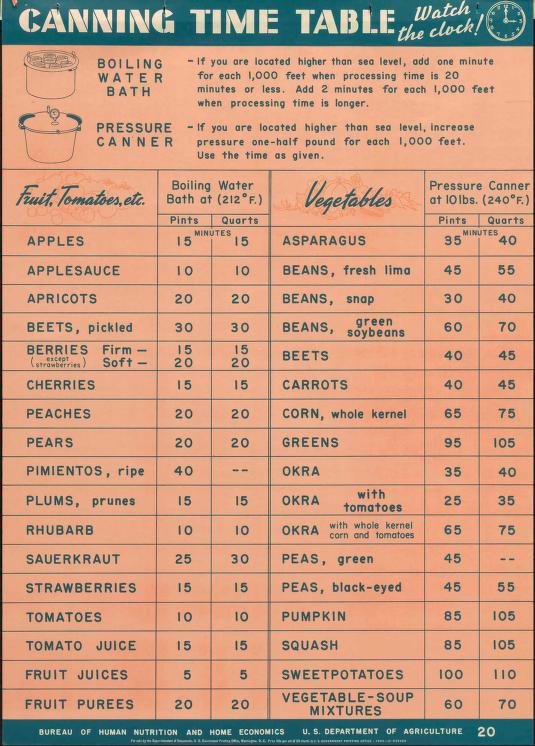
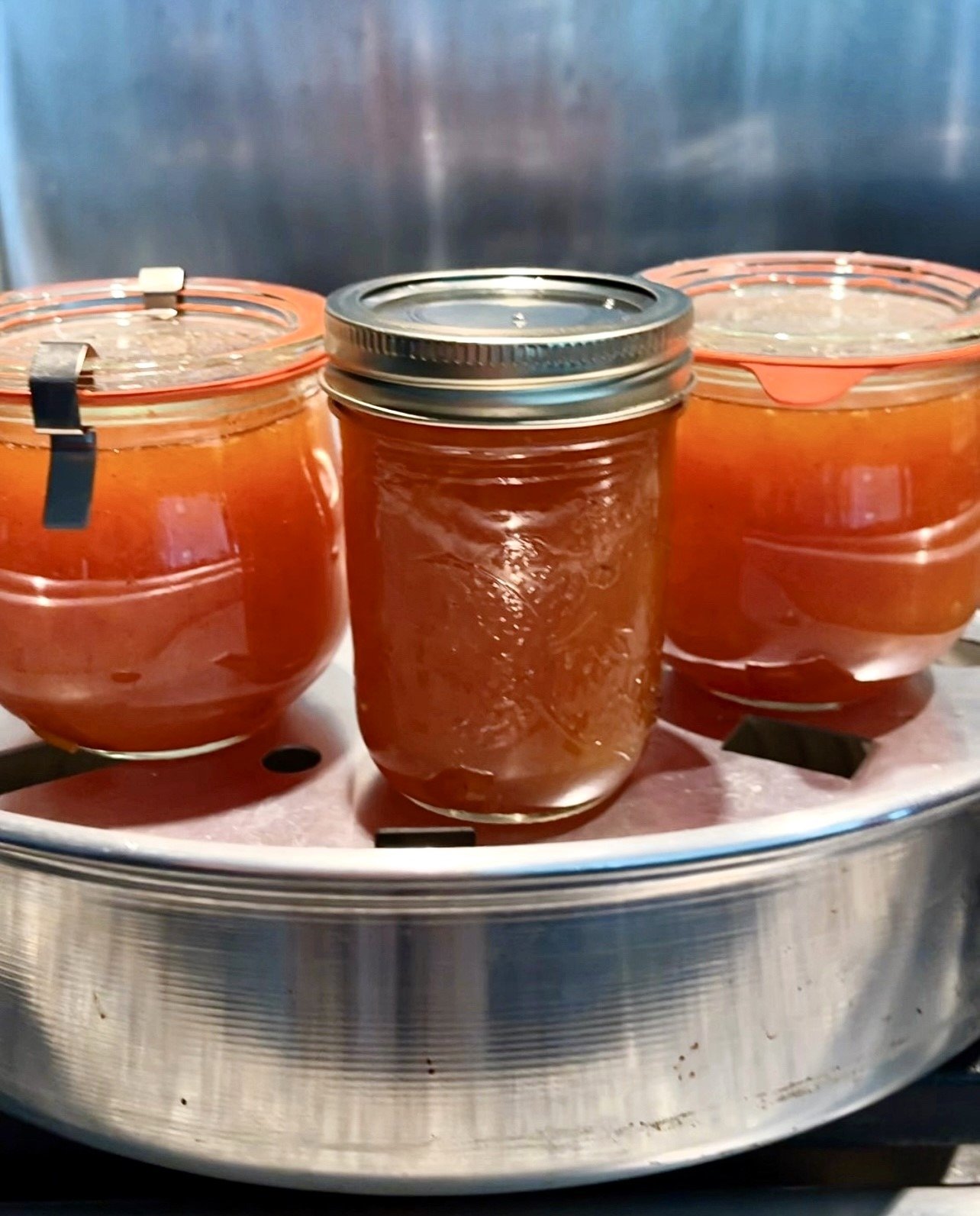
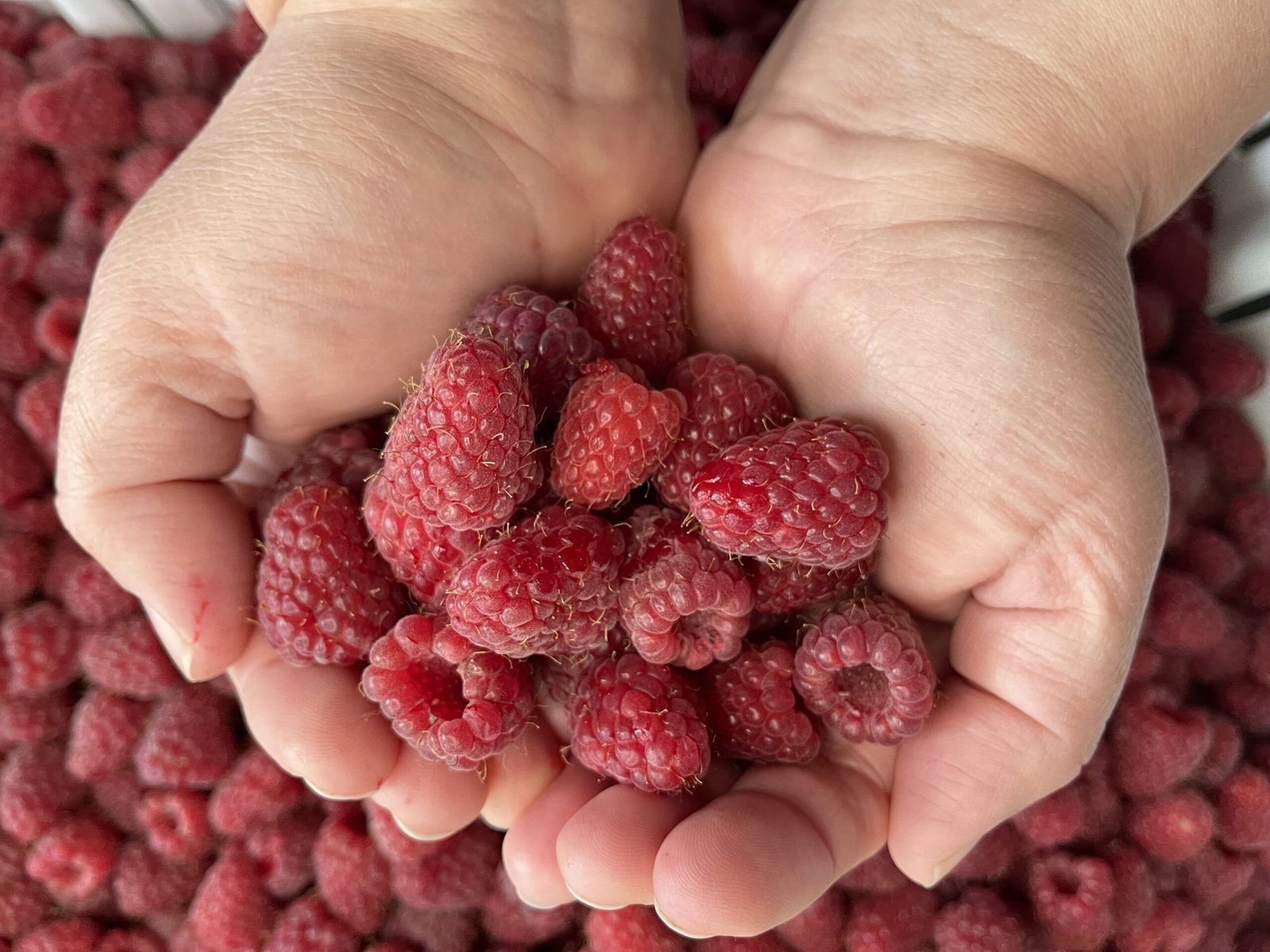


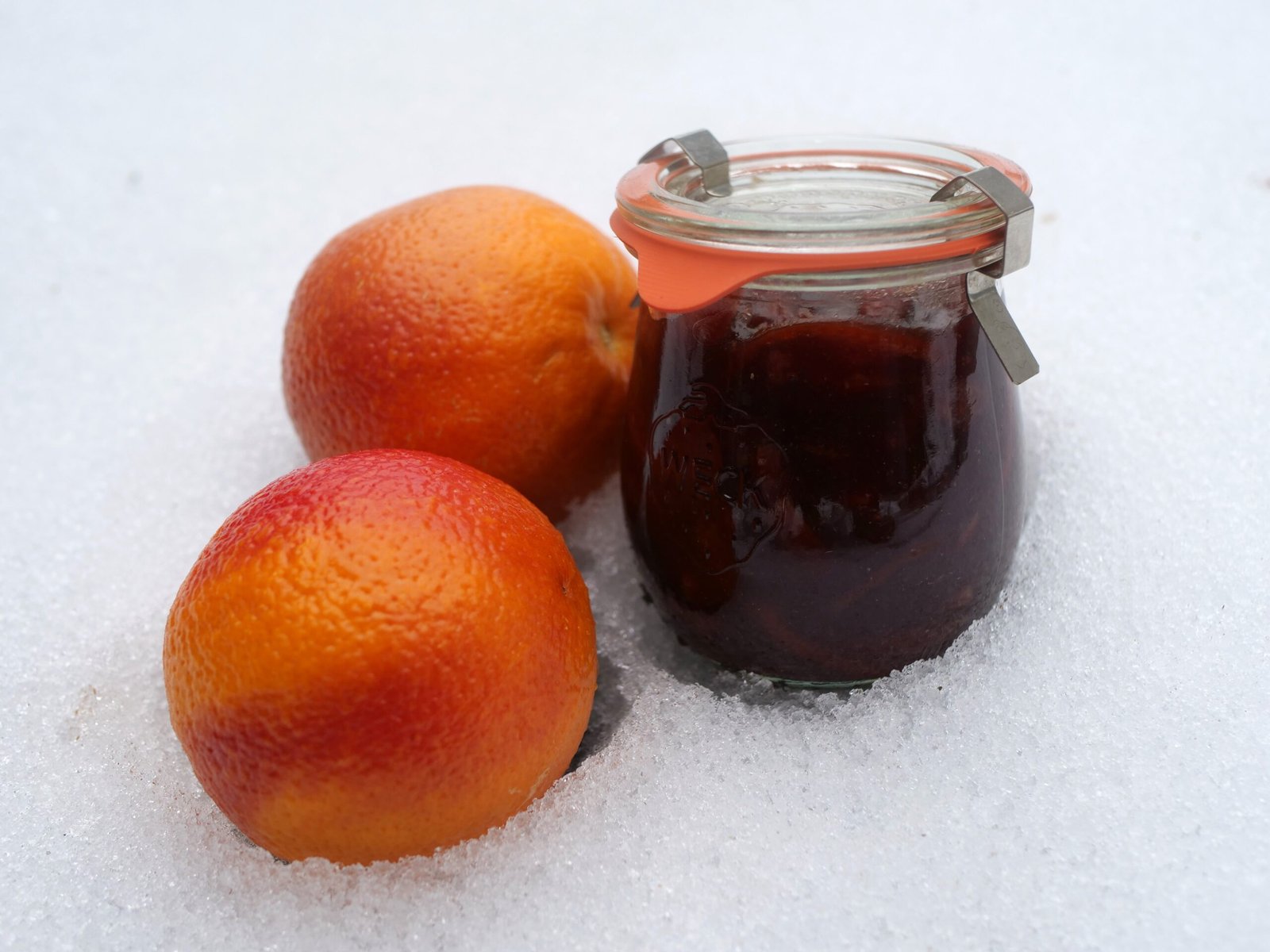
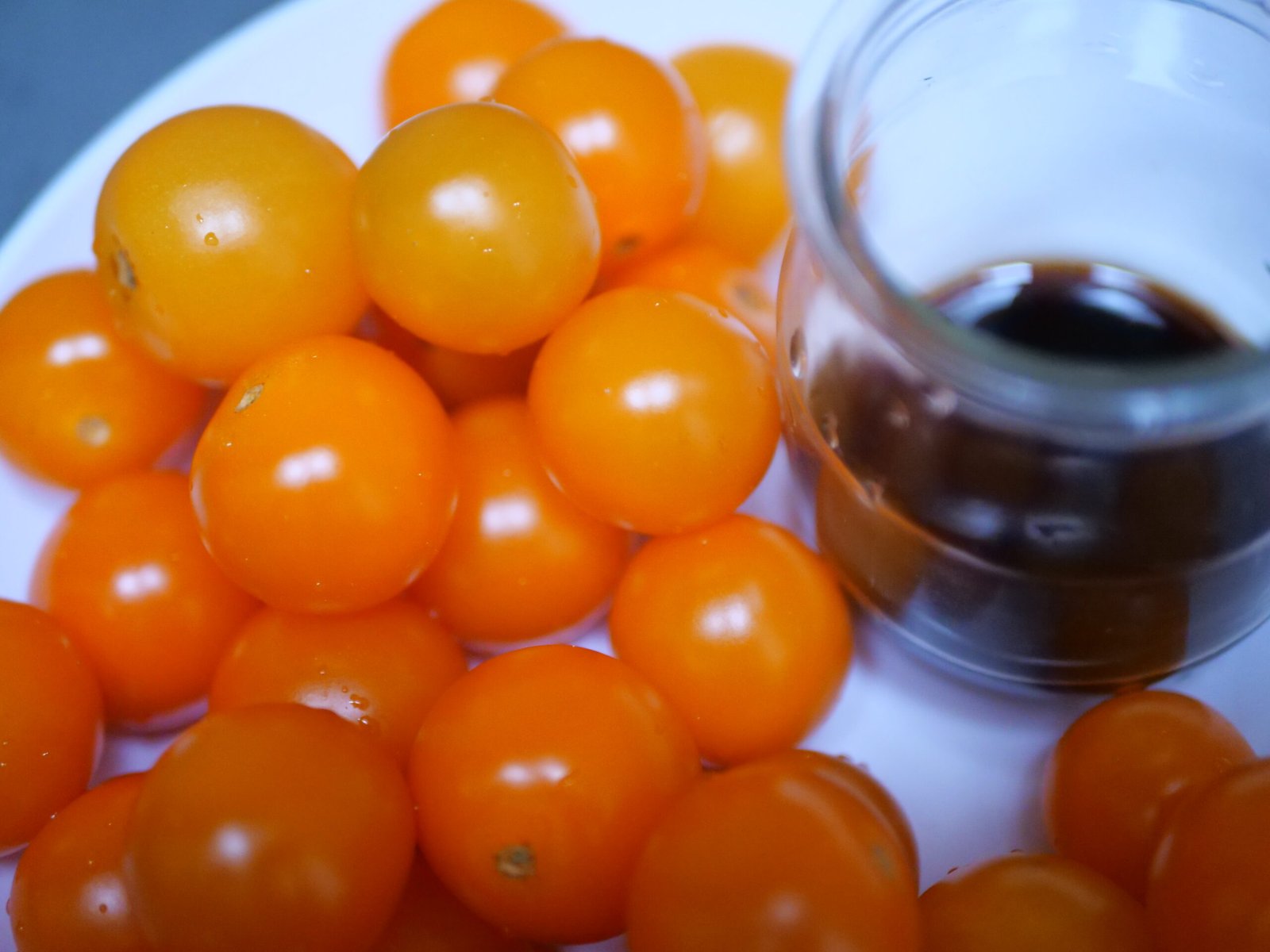
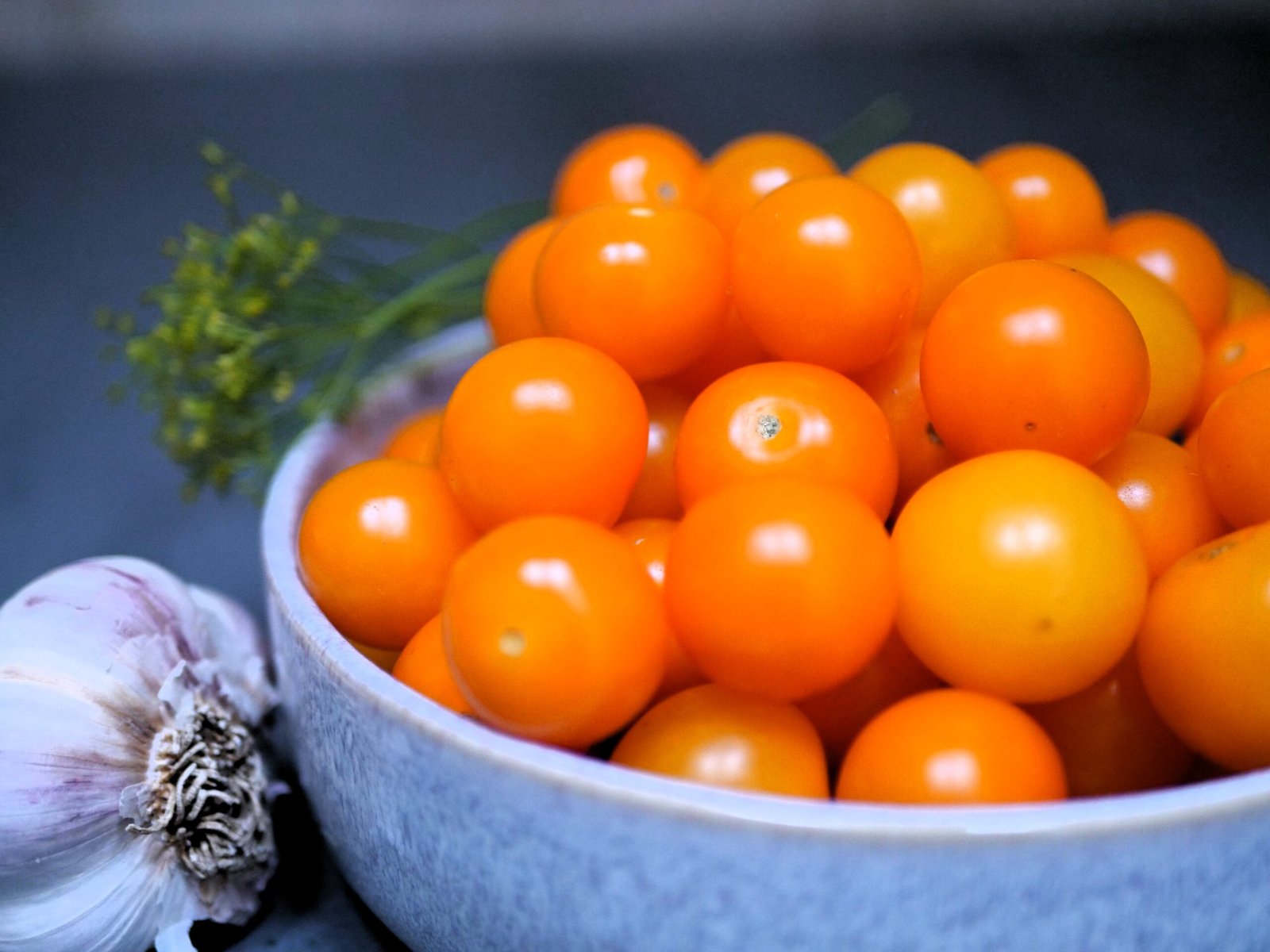


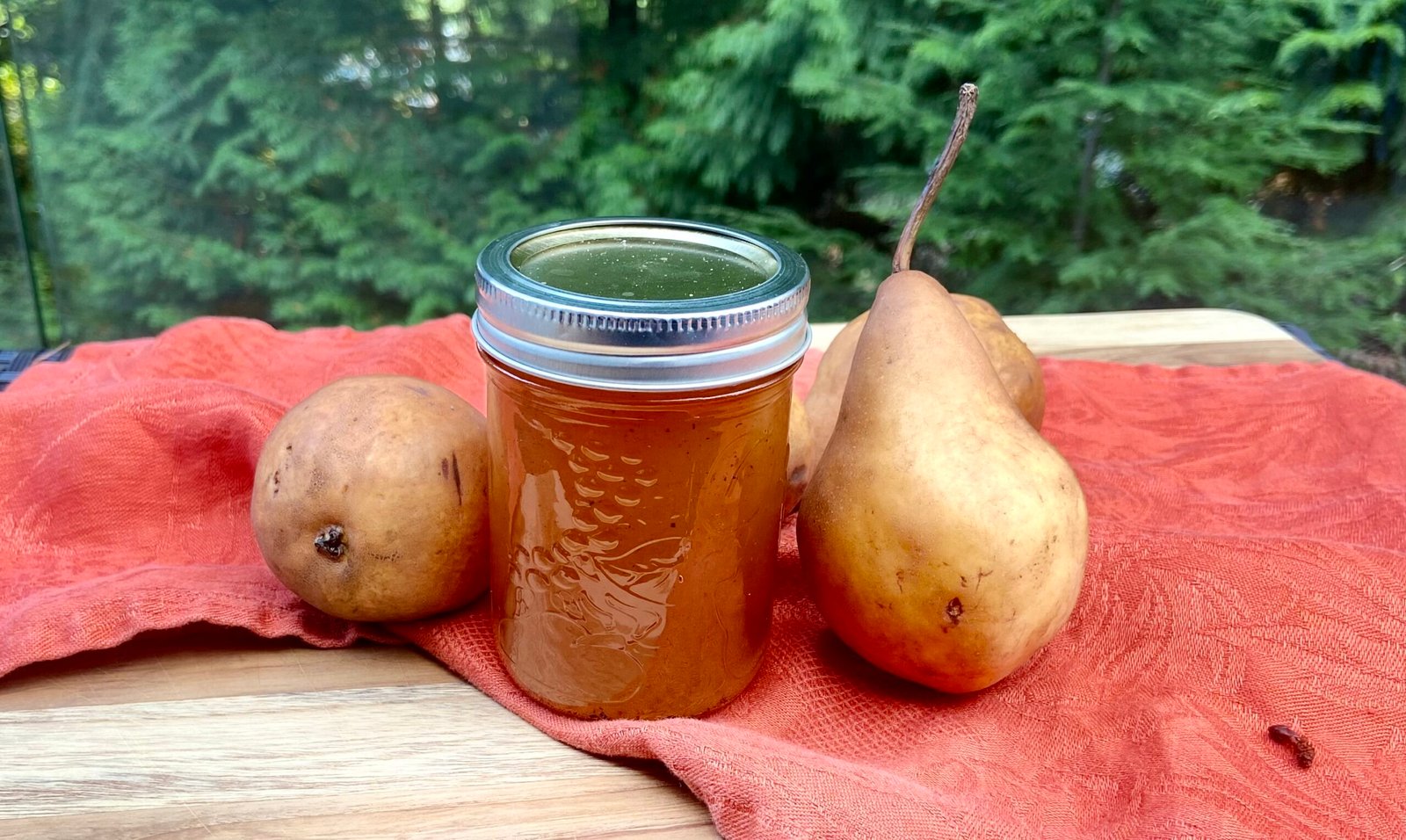


Leave a Reply